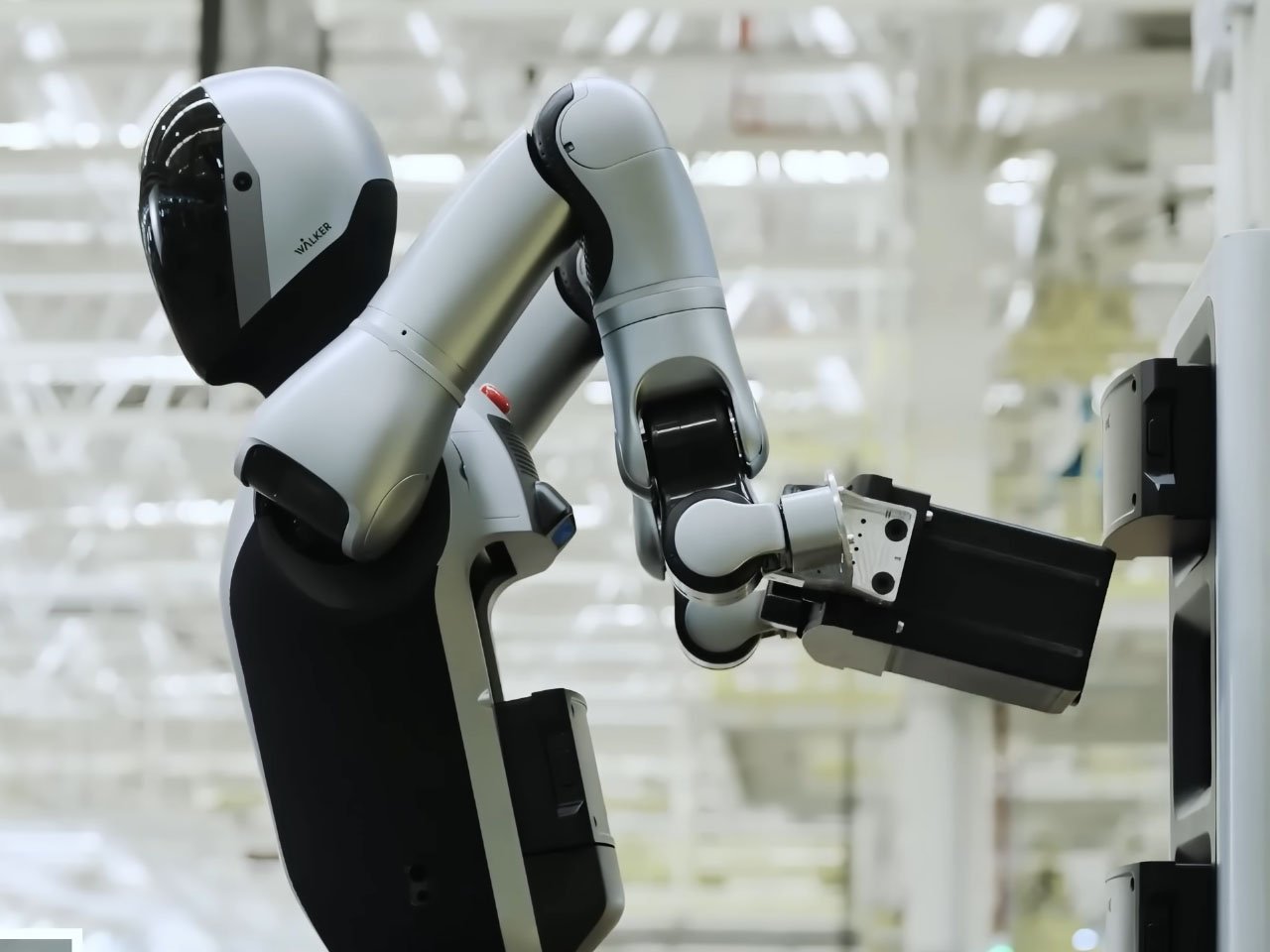It’s part of my daily exercise routine: stretching both arms back and trying to join my hands in a ‘namaste’ pose. I’ve been at it for years, still trying every day to perfect it. In China, however, this robot can not only do it effortlessly, but can also remove and swap the integrated battery pack in its back. Woof! Where is the world headed?
Robots have started imitating our emotions; they can fight, and now, with the new Walker S2, the world’s first humanoid robot capable of autonomous battery swapping, they’re also becoming self-reliant. If the progress continues at this pace and robots become fully self-sustaining, we may be headed into a future where robots will be doing everything. Let’s just hope they don’t enslave us or raise us like pets, then.
Designer: UBTech Robotics
UBTech’s humanoid robot, Walker S2, is described by the company as “a new milestone for industrial domains.” Sure thing, but when such trained robots with additional brains (AI) leave the labs and rush into our everyday life, it is an uncertainty we are not ready to brave just yet, or perhaps, never will be!
That said, let’s not take anything away from the incredible feat achieved by UBTech. The Chinese robotics company has long established itself as a leader in integrating humanoids with emotional intelligence. Una for instance. Now, Walker S2 is taking that to a new level, with complete autonomy. Which means that the robot does not rely on a human operator to remove and replace its battery pack, instead, it can walk up to a battery charging station, remove a drained pack from its back, and swap it with a fully charged battery from the station. No assistance whatsoever.
With its efficiency and self-reliance, the Walker S2 is ideally developed for factories. It is compatible with Wi-Fi, Bluetooth and has a fisheye camera with 3D stereoscopic vision integrated in the head. This is accompanied by movable joints in the hands, arms and knees. This humanoid stands 5 feet 3 inches tall, weighs 43 kg, and can ferry loads in its strong arms, working almost 24/7. Its gait may be a little comic, but you dare not laugh at it on the face.
Coming to the most decisive aspects: it comprises a 48-volt lithium battery in a dual-battery system. The entire pack can power the robot for four hours (standing). It can walk approximately two hours on a full charge. Walker S2 is capable of identifying when either of the two batteries is running low and needs swapping. As shown in its demo video; in that case, the robot walks calmly to its designated battery charging station, turns around, extends its arms to its back and pulls out the dying battery. It can deftly slot the removed battery into the vacant slot in the charging station and remove a fully charged battery out of the station and attach it in the vacant slot at its back. All ever so conveniently. The removed battery takes 90 odd minutes to fully charge.
The post Walker S2 humanoid robot can change its own battery pack, hints possibility of self-sustaining bots first appeared on Yanko Design.

